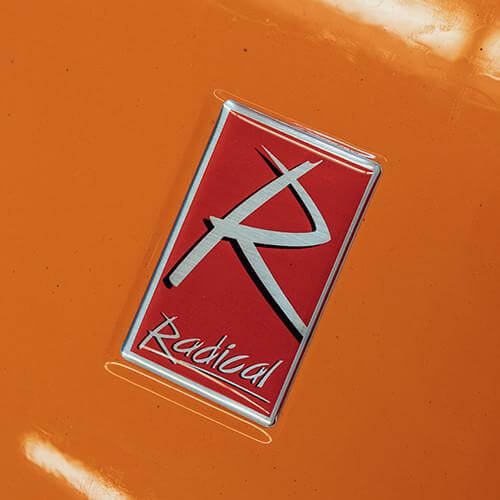Properly maintained tires are extremely important to racing. If tires aren’t properly conditioned or are unevenly worn, you could be looking at a safety issue while on the track. By making sure your tires are in great condition for racing, you can feel more secure when executing your amazing racing skills.
Below, you’ll read about tire conditioning, determining a tire’s condition, and how temperature and wear and tear go hand in hand. Knowing all the details will help you preserve your tires for the sake of safety, performance, and not having to replace them prematurely.
Tire Conditioning
Conditioning racing tires is important. There are different products that work for this, such as a tire softener or tire soak. How the tires are conditioned depends on the type of tire. The type of tire depends on the track. For instance, racing on asphalt is going to be much different from racing on a dirt track. Asphalt racing comes down to stagger and pressure. Dirt requires a maximized grip while the car makes its way down the track forward and sideways. Tire conditioning can involve grinding, siping, and grooving. However, it’s all about knowing the why, how, and when of tire prep.
When a driver is in a class that regulates tires, it puts a racer in an even more difficult situation. The tires will have to be conditioned according to the regulations specified for that class. Of course, you only want to condition good tires.
Determining if a Tire Is Still Good
When you need to determine if a tire is still good, there are several things to look at. They include:
Dry Rot – The tire may appear to be in good condition, but there are cracks in the sidewalls. Another name for dry rot is “weather checking.” This occurs when the tire has become too old. If the car frequently has been parked in an area with high temperatures, dry rot is most likely going to happen.
Falling Apart – If you start seeing the other layers of the tire, it is most likely falling apart. The tire can bulge, and this affects drivability and safety.
Objects Lodged in the Tires – It is possible for items to become lodged in the tires. Look for small stones, nails, or anything else that’s sharp. It is best for the tire to not be compromised, even if there is no hissing sound when you pull the object out of the tire.
Worn Sidewalls – If the sidewalls are worn, are scuffed, have holes, or bulge, you don’t want to take any chances.
If none of these issues exist, then the tires are most likely in good shape. However, you don’t want to stop here, because you need to evaluate the wear pattern.
Tire Temperature and Wear Patterns
For maximum performance, you want to look at the wear pattern of your tires. However, you have to look at their temperature, as well.
Dirt track racers will tell you that taking tire temperature isn’t practical, although high and low temperatures are related to high and low wear. If the temperature is high on an area of the tire, that spot will become a high-wear area. Asphalt racers can use tire temperature to get wear information.
It’s important that the temperature reaction is immediate, because it can indicate what changes need to be made. However, some teams have ignored pressure problems and changed basic setup parameters to help improve the handling of the car.
It all starts with reading the tire pressure, which needs to be started with cold tires. To find the ideal hot tire pressure, subtract how much the tire grows when the temperature increases from cold to hot during a racetrack run. There’s some backtracking involved in this process to ensure the pressures are correct. For example, there may be an 8-pound increase in the pressure of the right-front tire after a run. In this case, the right-front tire could be switched to the left-front tire. It depends on the amount of work the tire must do. After the change, let’s say a run sees a 6-pound gain in pressure. This shows that the starting pressure has to be increased by 2 pounds to ensure optimal performance.
The temperature is an indicator of how the load is distributed throughout the tire. The higher the pressure, the more work that part of the tire has to do. This also means the temperature will be higher.
The wear itself is more subtle, and multiple laps have to be run to determine how well the tires are working. Looking at the right-front tire again, a middle that is cooler than the tire’s outside edges means the tire needs more pressure. The left-front tire may have a middle temperature that’s higher than the outside edges, indicating the pressure needs to be reduced. Remember, higher temperature means faster wear.
If you see a wear pattern on a tire where the outside edges are worn and the center isn’t, then that tire was operating on low pressure. If the wear pattern shows a worn middle, the tire was operating on high pressure. Proper pressure ensures even wear.
Once pressure changes are made, the car is sent out for another practice session to see what the new results are. The temperature should be even across the face. If not, then the pressure still needs to be adjusted. The car is sent out for a new session each time a change is made. This is important to ensure each tire is going to perform properly.
Tips, Tricks, and Common Mistakes
Aside from testing the tires over multiple sessions, there are some other things to keep in mind:
- Remember that tires are in their peak condition in the first two or three laps. Peak time should be used wisely.
- Ensure the suspension is set up well, since it can influence tire wear. This is sometimes forgotten. It’s all about camber angles and tire pressure limits.
- Some drivers overuse the tires without getting the most speed out of them. Aggressive overtaking, heavy braking, and hitting rumble strips and curves can make the tire wear faster.
- Excessive weaving can wear the tires, but weaving the right way can keep the tires at optimum temperatures when driving slowly. Weaving during the formation lap helps keep the tires warm because the surface of the tires is being scrubbed in the process.
- Tires should be preheated before the race so they are ready to go. This is why tire warmers are sometimes used.
It is very important that tires have the right setup to ensure the best performance. The tires also have to be safe to avoid a tire-related crash. Once the car is set up right, there are some things a racer can do to extend tire life, such as avoiding going off the track, spinning out, and accelerating and then braking in a straight line. It is possible to find a balance between hitting the limit on the track and preserving the tires.
To learn more about tire maintenance or have other vehicle related maintenance inquiries please contact Team Stradale.



